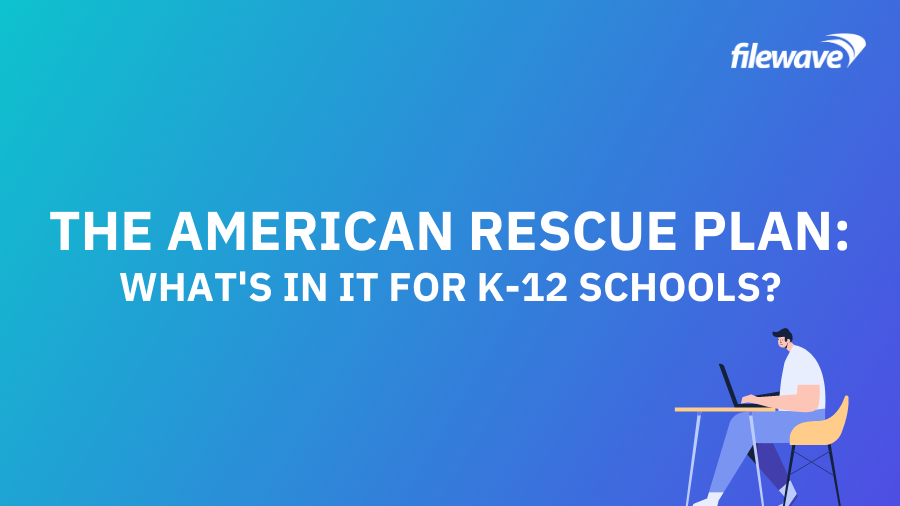Congress approved the American Rescue Plan (H.R.1319) on March 10, and it’s now on its way to President Joe Biden. Understanding the maze of funding programs and reporting requirements in the more than 600-page bill will be essential for state, local, tribal and school leaders to put these resources to use.
This post highlights how the American Rescue Plan differs from the previous federal relief in the Coronavirus Aid, Relief and Economic Security (CARES) Act and the Coronavirus Response and Relief Supplemental Appropriations (CRRSA) in the Consolidated Appropriations Act, 2021.
More Funding for K-12 Schools:
While the $1.9 trillion American Rescue Plan isn’t larger than the $2.2 trillion CARES Act, it sends more aid to K-12 schools than the prior federal relief packages. In particular, the Elementary and Secondary School Emergency Relief (ESSER) Fund — dollars directed to school districts for a variety of eligible services — has grown substantially. There is no allocation for the Governor’s Emergency Education Relief Fund (GEERF), which was included in the prior packages. Governors will have discretion in allocating ESSER funds that aren’t sub-granted to local districts or dedicated for learning loss, summer enrichment and afterschool programs.
The American Rescue Plan also sends $350 billion to state, local and tribal governments through the Coronavirus Fiscal Recovery Fund. These dollars are not dedicated to education. Yet, the funds are increasingly available to be used for education because of language changes from CARES.
| CARES | CRRSA | American Rescue Plan | |
| Governor’s Emergency Education Relief Fund (GEERF) | $3 billion | $4.1 billion | $0 |
| Elementary and Secondary School Emergency Relief (ESSER) Fund | $13.2 billion | $54.3 billion | $122.8 billion |
| State, Local, Tribal Aid | $150 billion for Coronavirus Relief Fund (CRF) | $0
Extends use of CRF funds to Dec. 31, 2021 |
$350 billion for Coronavirus Fiscal Recovery Fund |
In addition to more K-12 funding, the American Rescue Plan requires states to reserve 5% and local school districts to reserve 20% of ESSER funds for addressing learning loss through the implementation of evidence-based interventions that respond to the academic and social and emotional needs of students.
Examples listed in the bill include summer learning, comprehensive afterschool programs and extended school years. While learning loss was a permitted use in CARES and CRRSA for ESSER funds, there was not a dedicated amount for that purpose. Initial evidence suggests there is both disparate and widespread examples of inequitable learning loss that will require immediate action.
The American Rescue Plan includes $2.75 billion in emergency assistance to non-public schools. The funds will go to governors to assist non-public schools most impacted by the emergency and schools that have a significant percentage of students living in low-income families.
New Equity Protections
The American Rescue Plan adds new spending requirements for state education agencies (SEAs) and local education agencies (LEAs) to protect funding levels for school districts and schools with high percentages of students living in poverty.
- SEAs cannot reduce per-student funding in districts with high rates of students living in poverty for fiscal year 2022 and fiscal year 2023 by more than statewide per student reductions.
- SEAs cannot reduce funding for the districts with the highest rates of students living in poverty in FY 2022 and FY 2023 below the state funding levels for that district in FY 2019.
- LEAs cannot reduce state and local funding or staffing per student in schools with high rates of students living in poverty in FY 2022 or FY 2023 by more than district-wide funding or staffing reductions.
The maintenance of equity provisions adds to blanket maintenance of effort requirements that were included in CARES and CRRSA.
State, Local and Tribal Government Aid is Back With New Rules
The American Rescue Plan includes $350 billion in funding for state, local and tribal governments in the Coronavirus Fiscal Recovery Fund. These funds can be used for responding to the public health emergency and negative economic impacts caused by COVID-19. The bill also specifies that these dollars can be used by governments to address decreased revenues caused by COVID-19. This differs from the Coronavirus Relief Fund in CARES that could not be used for revenue replacement.
The allocation of these resources has also changed. State economies and their revenues have been impacted differently by the pandemic. Some of the Coronavirus Fiscal Recovery funds are now awarded based on the state’s share of national unemployment in the last quarter of 2020.
The American Recovery Plan has a substantial investment of resources going to schools. The dollars can assist schools in increasing attendance, addressing inequitable learning losses, and protecting the health and safety of students, educators and staff. Now that the funding has been approved, how and where the money gets invested will be critical to address student learning, wellness and safety needs following the COVID-19 pandemic.
How Can You Use Your Rescue Funds with FileWave?
FileWave can assist you with digitizing your classroom initiatives as well as creating comprehensive mobile device management programs for your school district. These funds assist you with more than just information technology expenses. Contact one of our experienced relationship engineers today to learn more about how you can get started with FileWave today.


